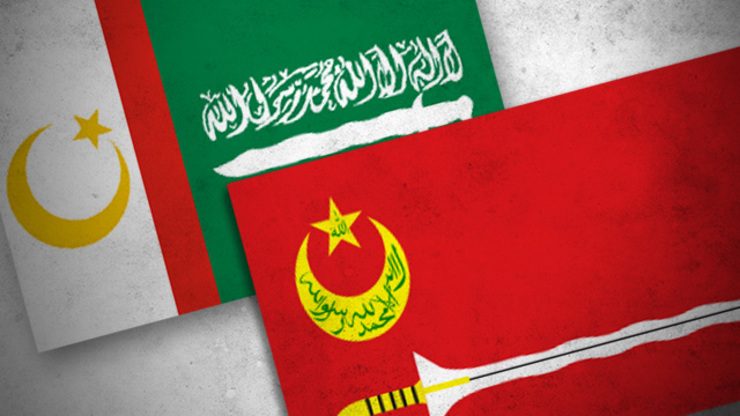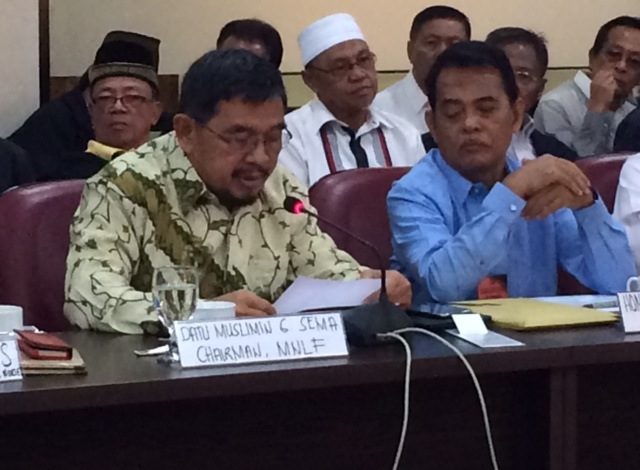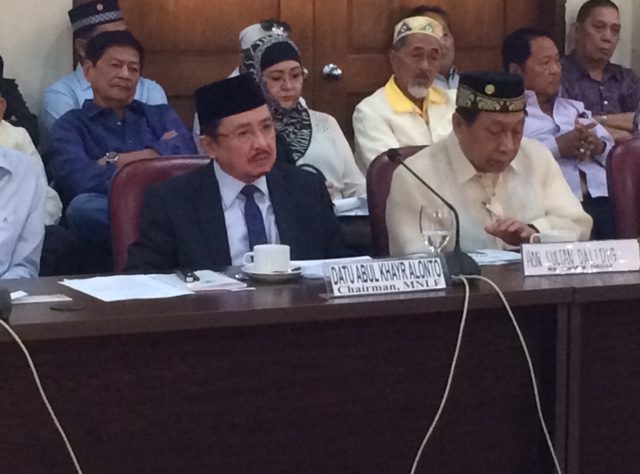SUMMARY
This is AI generated summarization, which may have errors. For context, always refer to the full article.

MANILA, Philippines – The House of Representatives opened the first day of session for 2015, Tuesday, January 20, with a committee hearing on the proposed law creating a new autonomous region in Mindanao.
It was the 35th public hearing conducted by the special committee created to tackle the proposed Bangsamoro Basic Law, and the 2nd to the last public hearing to be conducted before lawmakers hold a series of executive sessions to finalize the bill.
The hearings brought committee members not just to the current Autonomous Region in Muslim Mindanao but also other provinces such as Davao and Zamboanga and even provinces outside Mindanao – from Cebu to as far as Ilocos Norte – in what Cagayan Representative and commitee chairman Rufus Rodriguez described as one of the most comprehensive set of hearings conducted in the history of the House of Representatives.
This shows the level of effort that Congress has undertaken to seek and build a national consensus on the bill that seeks to create a new region with more political and fiscal autonomy than the ARMM.
The Aquino government wants the law passed first quarter of the year so that a plebiscite is held and leaders of the new region could be elected before President Benigno Aquino III steps down in 2016. (READ: Bangsamoro law Aquino’s 2015 priority)
Yet proceedings during the 2nd to the last public hearing on the measure do not indicate consensus. The same issues that were at the center of the 2013 siege of Zamboanga that threatened to derail the peace process continued to be raised.
Leaders of two factions of the Moro National Liberation Front (MNLF), and heads of traditional sultanates in Mindanao faced the House ad hoc committee on the Bangsamoro Basic Law on Tuesday, January 20.
Abul Khayr Alonto, who represents 35 of the 39 surviving members of the original MNLF central committee, reiterated his strong support for the Bangsamoro Basic Law.
But Muslimin Sema, former Cotabato City vice mayor, maintained his stance that he neither supports nor rejects the bill.
Two other factions – the “Misuari Breakway Group” led by MNLF founding chairman Nur Misuari and Habib Mujahab “Boghdadi” Hashim, chairman of another MNLF breakaway faction, the Islamic Command Council, were not present. Both factions are against the peace process.
Also absent from Tuesday’s hearing was the Bangsamoro Islamic Freedom Fighters – a splinter group of the MILF who have reportedly pledged allegiance to the radical Islamic State of Iraq and Syria (ISIS).
Misuari is facing criminal charges over the Zamboanga siege that killed closed to 200 during the conflict. (READ: Zamboanga still under siege)
It was the MNLF, under Misuari’s leadership, that led the Muslim rebellion in the 1970s. The MNLF signed the peace pact with the Ramos administration in 1996.
The Moro Islamic Liberation Front, which signed a peace agreement with the government that is now the basis for the proposed Bangsamoro Basic Law, separated from the MNLF in the 1970s at the height of tensions between government and rebel forces due to leadership differences.
The MNLF signed two peace accords with the government – the 1976 Tripoli Agreement and the 1996 Final Peace Agreement – years before the MILF signed a peace pact with the government in March 2014. (READ: The MILF, the MNLF and 2 peace agreements)
After signing the pact with the Ramos government, Misuari rose to power to become the governor of the ARMM.

MNLF position
Up to now, the MNLF maintains that the government reneged on agreements made in the 1976 and 1996 peace accords.
“The last 3 years have been very difficult for the MNLF. The signing of the Framework Agreement on the Bangsamoro in 2012, the Comprehensive Agreement on the Bangsamoro in 2014 and the crafting of the proposed Bangsamoro Basic Law may have been great and historic achievements but they caused discord as well,” Sema said.
“The current contrast further enhanced the friction that divided the MNLF in 1976 whether or not to pursue independence or autonomy. And after the MNLF accepted autonomy in 1976 and 1996, we are divided further and subjected to the more difficult question whether or not to cling to the 1976 and 1996 agreements or go back to the original demand,” Sema said.
The discord was dramatized during the siege of Zamboanga in 2013, carried out after Misuari once again declared he is pursuing independence after feeling left out of the current peace process.
What does the MNLF want?
For Sema, the Bangsamoro Basic Law should not repeal Republic Act No. 9054 but only amend it.
Sema said this will allow current provinces under the ARMM to be automatically included in the proposed Bangsamoro region.
“In its current form, the proposed Bangsamoro Basic Law is a recipe for disintegration of the current autonomous region unless our perspective on this matter is taken with a grain of salt. Moreover, this will be the third plebiscite on the region and the way the BBL is written, we are bound to lose what we have gained in the last 4 decades of our people’s struggle,” Sema said.
Sema said one of the key components that was left unimplemented in the 1976 Tripoli Agreement was the guarantee that the plebiscite to establish an autonomous government should be conducted in 13 provinces and 9 cities in Mindanao and Palawan.
Sema wants Congress to include this provision in the Bangsamoro Basic Law.
The government, meanwhile, is of the position that the MNLF’s aspiration to increase the ARMM’s territory is already embodied in the bill. In an ambush interview, Rodriguez said he shares the same view.
Under the proposed law, local government units outside the core territory – upon a resolution or a petition of 10% of voters – may ask for their inclusion in the plebiscite.

Alonto, who signed a communique with MILF chairman Murad Ebrahim expressing his support for the Bangsamoro, has the same position.
He said the Bangsamoro bill should “enhance” rather than abolish the ARMM so it may build on past agreements.
Alonto is not part of the Jeddah formula. He was elected as chairman of the 35 out of 39 surviving members of the MNLF central committee just before the Comprehensive Agreement on the Bangsamoro was signed.
Again, the same question that have been raised many times in the past is raised by Sema: “Where is the MNLF in all these considering it is the MNLF who negotiated for our people the principles of autonomy laid down in the 1976 Tripoli Agreement?”
Sema said there are “insinuations” from the government to make the MNLF part of the transition body for the Bangsamoro but this has not been discussed with the MILF through the OIC-sponsored Bangsamoro Coordination Forum.
Instead of focusing on the transition, government peace panel chair Miriam Coronel-Ferrer urged parties to focus on preparing for the election of the first set of Bangsamoro officials in 2016.
Challenge before Congress
During the hearing, Muntinlupa Representative Rodolfo Biazon asked Congress: Is it possible within the community of our Muslim brothers to have a convention of sorts to reconcile the differing statements of interests?
MILF chairman Mohagher Iqbal said the MILF and the MNLF have, in fact, moved to reconcile their difference through an OIC-sponsored forum.
Sema, for his part, threw the question back to legislators, who after all, had been to blame for crafting a law back in the late 90s that fell short of what the 1996 peace pact had promised.
“We have accepted autonomy. It is in the Constitution. But why is it so difficult to deliver it? And why is it now that it is our fault, the faults are thrown to us – that it’s because we are not united? No, we are united. We have accepted autonomy. But it must be the kind of autonomy that is comprehensive, and provides just and lasting solution,” Sema said.
When members of the ad hoc committee go into executive sessions from January 26 to 29 and February 2 to 4, Sulu Representative Tupay Loong said this is one of the key issues that should be resolved:
“This is the main issue facing us now – how to integrate the gains of the 1976 Tripoli Agreement, 1996 Final Peace Agreement into the BBL.”
He added: “The word “abolishing” must be looked into because if you abolish the ARMM, it is tantamount to rejecting the gains of the 1976 and 1996 peace accords.”
Constitutional issues
But for the chairman of the committee, the more pressing issue is ensuring that the bill is constitutional. (READ: Two schools of thought on the Bangsamoro bill)
“There is support in general of the general structure of the bill. The main points of the bill are political autonomy – that’s the power-sharing, and then the fiscal autonomy. All the rest are just trimmings,” Rodriguez said.
“We would like to say that, in general, there is vast support for the bill. So we are looking at some provisions that may be in conflict with the Constitution. So it will not affect too much the meat of the bill,” he added.
The last public hearing on the Bangsamoro bill in the House on Wednesday, January 21, will feature constitutional experts as speakers.
Senator Miriam Defensor Santiago will hold another round of hearings focusing on constituitonal issues on January 26.
Senate President Franklin Drilon said the Senate hopes to pass the law in plenary by March but Speaker Feliciano Belmonte Jr said there is no deadline to pass the law. – Rappler.com
Add a comment
How does this make you feel?
There are no comments yet. Add your comment to start the conversation.